Chinese people have a strong concept of housing, and a house is one of the main features of a stable life. At present, the housing in China is still dominated by high-rise buildings, while the rich are more keen on villas. Most of the villas on the market are in European and American styles. The other part of the villa in Chinese style is eye-catching.
Too unified European and American style villas will cause aesthetic fatigue. The villas designed in Chinese style not only inherit the essence of Chinese culture, but also innovate and have a unique charm. At the same time, it also shows another pursuit of high-end home buyers for life.
See Also: Top 10 Super Luxury Houses In China
Top 10 high-value Chinese-style villas
1. Yun He An Shang De Yuan Zi 运河岸上的院子
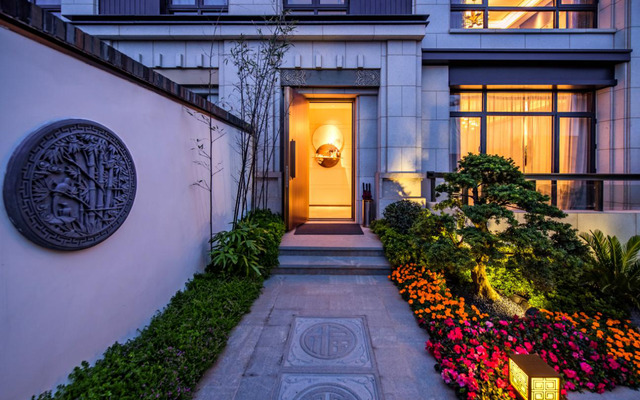
The Yun He An Shang De Yuan Zi of the Taihe Canal in Beijing, through the study of the traditional lanes and hutong spaces, reorganizes and sorts out the streets and alleys with modern methods. The whole becomes the representation of Chinese form and modern connotation. The temperament and connotation are reflected in the dynamic and harmonious living. In the stillness, the forms of architecture and landscape come from traditional aesthetics and modern adaptability, and have the characteristics of modern living. A new Chinese-style landscape system is formed by Jing Street, Shenxiang, Xinyuan, Huaxi and Shanshui Garden.
2. Yijun 易郡
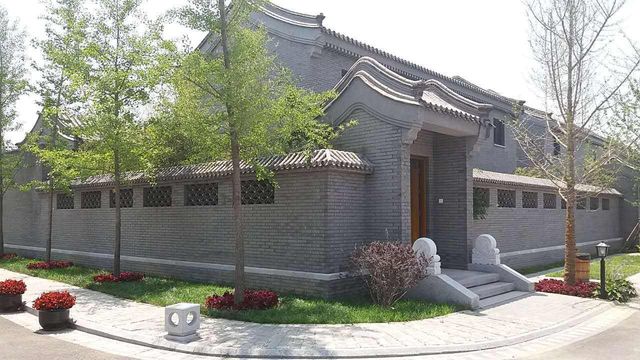
Yi Jun – New Beijing Siheyuan, inherits the form of traditional courtyards, respects nature and learns from nature with the architectural style of hard mountains, makes maximum use of natural ecological methods, and creates a healthy and comfortable living environment that is eco-friendly, energy-saving, material-saving, and comfortable.
3. Guan Tang 观唐
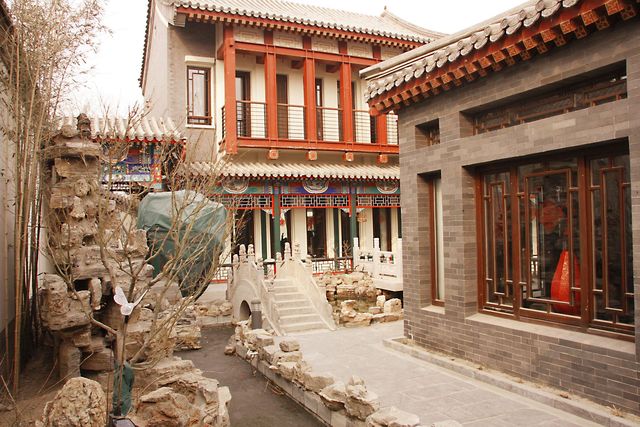
The Guantang Chinese-style villa in Beijing, while returning to the life concept and spiritual realm of a Chinese-style courtyard, also absorbs the techniques of Western-style villas to achieve a comfortable living life in an indoor living space that conforms to the living habits of modern people. Its internal space layout realizes the ecological characteristics of the house by means of large surface width and small depth, and extends the layout method of centralized layout around the land to achieve internal connectivity, and at the same time, the uniformity of indoor space lighting and the effect of keeping warm in winter are guaranteed. . It comprehensively embodies the advantages of Chinese and Western-style residences, and builds a Chinese-style house that combines ancient, ancient, modern, Chinese and Western styles.
4. Vanke Fifth Park 万科第五园
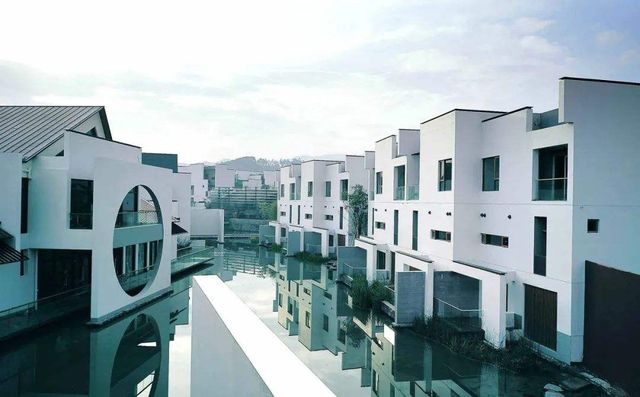
Vanke No. 5 Garden, which absorbs the essence of many Chinese-style buildings such as the Four Famous Gardens in Lingnan and Beijing Siheyuan, supplemented by modern architectural culture and features, integrates modern fashion elements and traditional architectural styles, and brings China’s traditional architectural culture into full play. , the simple appearance and color of white walls and black tiles are harmonious and beautiful, creating a typical Jiangnan water town style and forming its unique modern and new Chinese architectural features.
5. Xiangshan No. 81 Courtyard 香山81号院
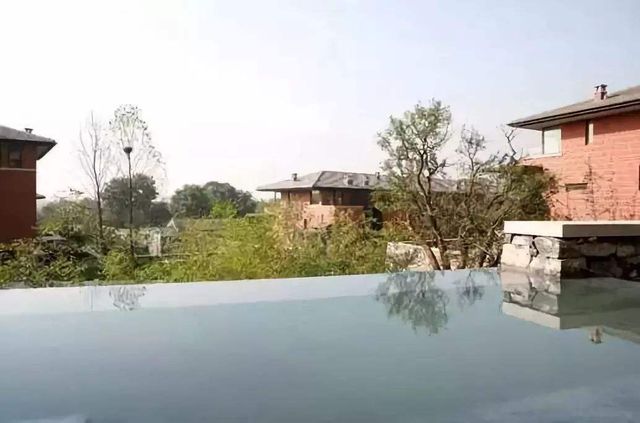
Courtyard No. 81, Fragrant Hills, Beijing, by redefining the ideal of traditional Chinese mountain dwellings, demonstrates the extent to which inner unity and harmony can resonate. It expounds the ideal way of living in traditional China on the basis of a positive response to the context of the site, and the details reflect the tranquility, far-reaching and concise elegance of traditional culture.
6. Greentown Lily Garden 绿城百合园
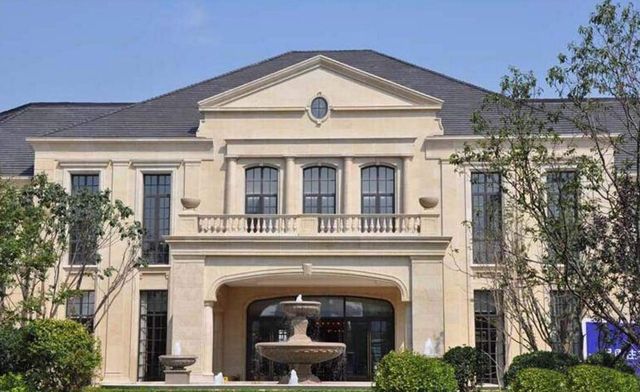
Greentown Lily Garden ingeniously encloses the street and the courtyard. The street exudes Chinese-style tranquility and elegance, while the space shows the privacy and respect of the courtyard. The private courtyard echoes with the open and semi-open public courtyard, and outlines a strong Chinese style. Combining modern life with traditional culture, it perfectly realizes the return of residence to courtyard feelings.
7. Xiang Shan Jiadi 香山·甲第
Location: Beijing, 2008
Fragrant Shanjiadi creates a habitat with a strong oriental spirit through the combination of different levels of space and color changes. In terms of overall architectural style, it draws on the spirit of Fragrant Hills and the essence of Beijing’s traditional culture, adopts traditional Chinese architecture with appropriate modern elements, and combines the combination of different spaces such as “Hutong” and “Siheyuan” and changes in color, combined with Beijing’s cultural characteristics and red , yellow, gray and other Fragrant Mountain tones, to build a living environment with strong oriental charm, and create a noble residential area that condenses Beijing culture and Fragrant Hills characteristics.
8. North Vanke·Tangyue 北 万科·棠樾
Location: Dongguan, 2009
The Vanke Tangyue project is adjacent to Xianshui Lake and Daweibao Forest Park in the north, Mission Hills Golf Course and Qidong Reservoir in the west, and boasts unique mountain water resources. Fully relying on the river and mountain resources, while in dialogue with the mountains and rivers, the Hui-style architecture that reflects the oriental culture and the neo-classical gardens are perfectly combined, and it has been successfully built into a luxurious villa community and a high-end ecological residential area with a very modern Chinese style.
9. Hezhuang 和庄
Location: Hangzhou, 2010
The architectural style of Hezhuang is based on the official residence of the Qing Dynasty, and reproduces the splendid momentum of a large-scale residence with high walls and gray tiles. Hezhuang not only inherits the essence of traditional Chinese residential culture, but also absorbs the streamline of modern Western life. The architectural layout introduces the concept of Chinese courtyard life to form the layout form of a courtyard, reflecting the concept of “courtyard”, which can not only meet the Chinese people’s “happy gathering” living habit, but also provide a private living environment for modern people’s needs.
10. Ink Tsinghua Junlin Mansion 水墨清华君临府
Location: Wuhan
Ink Tsinghua Junlin Mansion is surrounded by the vast Ink Lake in the east and south, and you can enjoy the bustling home of Wangjiawan and Zhongjiacun business districts in the east and south. For modern people, the real hidden place should be a unique and quiet place in the bustling, which not only does not lose the original state of natural water and soil, but also maintains a proper distance from the fashion rhythm of the city. The texture of the city and the natural beauty Change the breath at will. Such a scale is in line with the site selection principle of traditional Chinese wealthy mansions.
The reason why the ink painting Tsinghua Junlin Mansion can endorse Wuhan and become a classic Chinese villa in China is that it is built on the basis of traditional national culture, integrates the essence of Beijing courtyard, Huizhou architecture and Suzhou garden, and retains the “first entry, The living space of “atrium, backyard, courtyard” also has the life interest of “partitioning, borrowing scenery, opposite scenery, leaking scenery, and clipping scenery”. In terms of materials, we will try to keep the original bricks, tiles and beams. Even if we need to use foreign materials, we will try to choose similar materials.
Secondly, it is located in the central city of Wuhan, and has natural lake view resources rich in nature and humanities. With the scarce location, excellent lake view resources, and the essence of Chinese style in the bones, the Tsinghua Ink Tsinghua project has achieved a place in the classic Chinese villas.